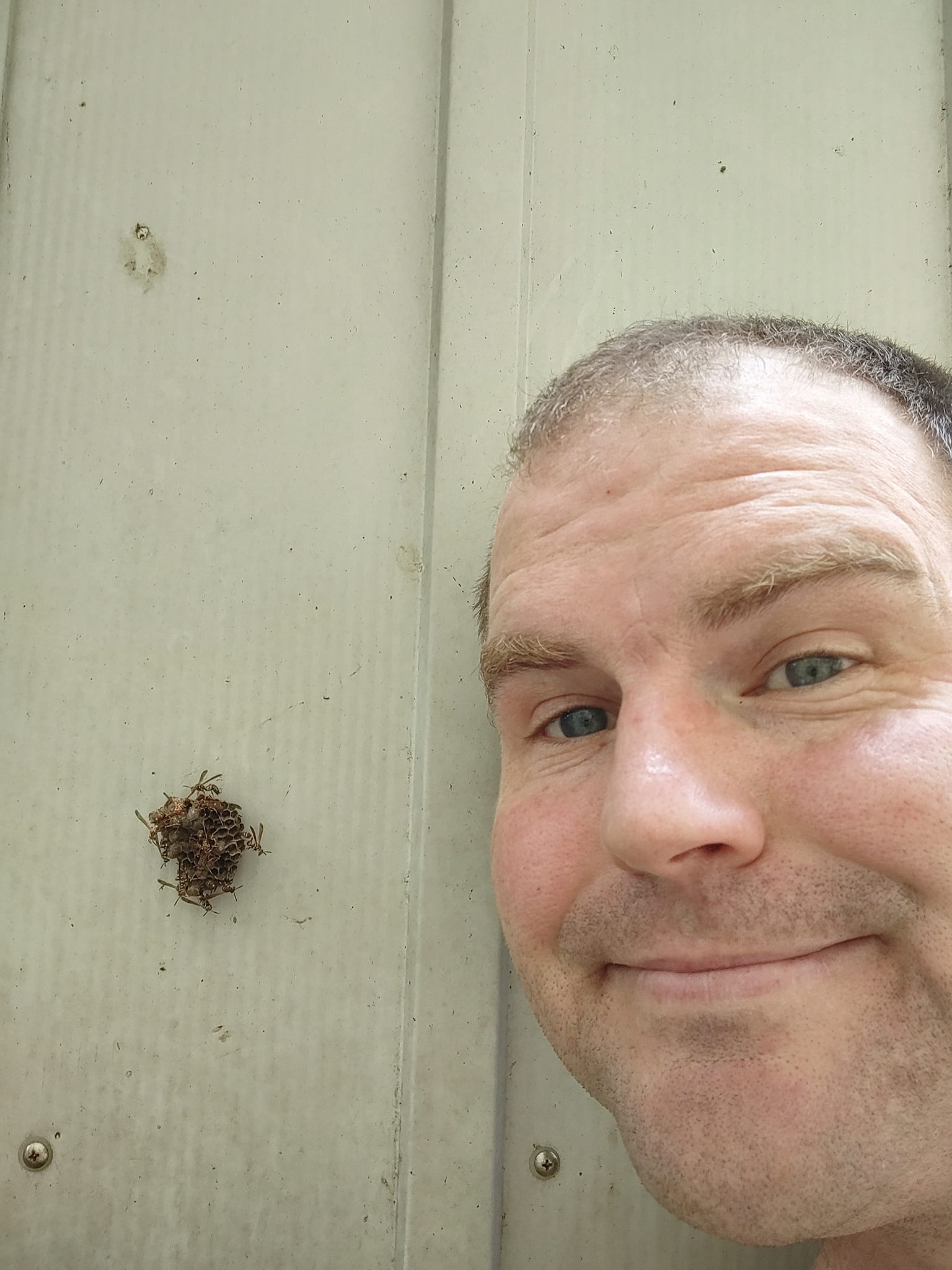
Be Nice to Wasps
Not long ago, I was startled by a friend describing her afternoon of knocking down wasp nests. I would describe this person as left-of-center, concerned about climate change, and other issues regarding our inability to live within the earth’s carrying capacity. It didn’t compute that knocking down wasp nests would be part of the day’s agenda. On the other hand, it’s a fairly common practice to call the exterminator and nuke them. After all, they are scary murder bugs with no purpose, right?
Here’s the problem. They are actually a fairly vital part of the ecosystem and align well with most center and left-of-center environmental agendas.
First and foremost, wasps are pollinators. Okay, that’s a broad brush, MOST wasps are pollinators. Yellow jackets aren’t great pollinators, but wasps you would see on the side of your house are, including the fairly ubiquitous paper wasp and the Guinea wasp in the image below are definitely pollinators. Bees and butterflies get all the love, but worldwide there are hundreds of plants that depend at least partially on wasps and 164 who wouldn’t exist without wasps. They are important bugs.
The second reason why wasps matter is pest control. Without chemical pesticides, wasps are actually quite good at patrolling crops for aphids, caterpillars, and other crop-destroying bugs. You can’t have organic gardening without wasps.
I get it, wasps hurt. However, they only hurt when we surprise each other. Once acclimated, wasps become quite tame and tolerant of human presence. (An exception to this is the bald-faced hornet that never learns to coexist in my experience.) I’ve been working with wasps most of my life, compliments of my dad’s three-acre organic garden and we learned to get along with them most of the time, even relocating a few nests here and there.
Don’t believe me? Here’s how my afternoon went.
We just moved into a house that we’ve been renting out for the last few years. Unfortunately, some trumpet creeper (a vine) has been growing up between a tool shed and the house and it’s gotten so bad that the vines had infiltrated the soffits. At some point it was going to damage the house, but in the meantime, it’s a great access point for carpenter ants. The vines needed to go as soon as possible.
The only problem is that some Guinea wasps had made their home on the side of the shed. When I started, I found two nests, one with careful observation and one with the sacrifice of my right pinkie finger. I had two options, wait until the first freeze in the hottest year in recorded history or deal with them now.

Because the nests were on either end of the same side of the shed, I had to pick one to sacrifice and one to keep. I kept the larger one. (This incidentally was also the one that got me stung, but I don’t hold grudges against non-sentient critters.) I knocked the small one down and waited for 10 minutes for them to dissipate. The queen is quite capable of relocating on her own and may even return in a few days to the same spot.
The next step was to take a picture of the surviving wasp nest, because this seemed like a good writing opportunity.
Then I very carefully cut around the surviving nest with a pair of two-foot-long loppers that I have named Cyndi.
When working around wasps, it’s best to do so on a bright sunny day. I have no science but lots of experience to back up the assertion that wasps are more likely to attack in bad light.
After the vines were snipped, I carefully pulled them out away from the wasps, trying to not hit the nest in the process with an errant vine. During all of this, the wasps didn’t even adjust their positions. (A threatened wasp will move into a defense posture with its legs extended and tail up. This is a warning, and someone trying to work around wasps should back off momentarily.)
Then I took another picture because of aforementioned writing.
The only remaining step was to show my wife how close the newly acquainted wasps would let me place my hand now that they are used to me. In this case, less than six inches. (And I’ll have to show them to my three small children as well.)
That’s it. Be nice to wasps.
